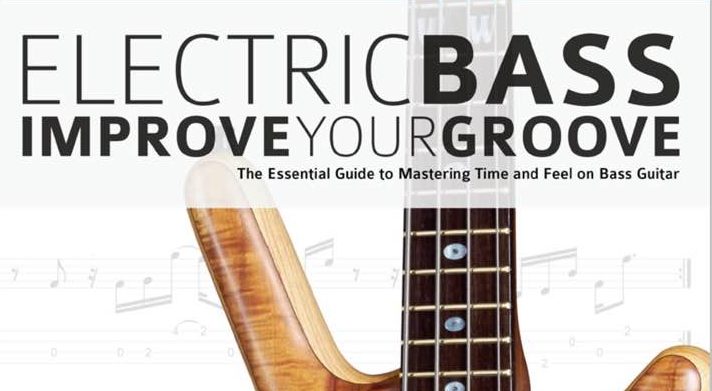Improve Your Time Feel by Practicing with a Drummer or Drum Beat- Bass Practice Diary – 16th October 2018
In my book Electric Bass: Improve Your Groove there’s an entire chapter about playing with drummers. If you want to improve your timing and your time feel on bass, then practising subdivisions with a drummer is a great way to go about it. Here’s a video featuring my good friend Lewis Davies on drums to show you how I do it.
Understanding time feel and groove
It’s important to understand that a band grooves and not just an individual. So, if you want to improve your groove, it’s essential to practice with other musicians and not just on your own. The best place to start is by practicing with a drummer. Practice placing your notes accurately on the subdivisions that the drummer plays, and you will begin to develop the collective time feel that you need for a band to groove.
It’s important to understand that virtually all music uses just a small number of subdivisions. Eighth note, sixteenth note, and triplet feels occur in virtually all styles and genres of music. If you want to have a great time feel on bass, it’s essential to not only understand them, but also to be able to execute playing them accurately. That is the premise of my book Improve Your Groove.
This post is not so much about understanding them, but more about how to play them better. If you want to understand subdivisions better, you could buy the book, or you could check out this post called Rhythmic Subdivisions on Bass Guitar.
Eighth note bass lines
When I talk about an eighth note feel, what I mean is that eighth notes are the smallest subdivision in the bassline. Therefore, in order to make the bassline groove you must feel the eighth notes running through the music. All of the eighth notes, not just the ones that you play on.
Here are the two eighth note bass lines that are featured in the video.


Triplets and shuffle feel
When you play a shuffle feel, the smallest subdivision is a triplet. Typically in a shuffle, you create a different kind of off-beat to the straight eighth note feel, by playing just the first and third triplet subdivisions in each beat. As I explained in the video, if you recite Ta-Ki-Ta for your triplets, and only play on the two Ta syllables, you get a shuffle feel.
This shuffle bass line is fairly advanced and it adds a few passing notes on the second subdivisions. But, it still retains the feel of a shuffle and Lewis is playing a shuffle on the drums.

The following example shows how you can change the feel whilst still using a triplet subdivision by accenting the second subdivision.

Sixteenth note feel
It’s important to understand that a sixteenth note feel does not necessarily mean that you have to play more or faster just because there are more subdivisions. It just means that in order to get the feel right, you need to feel the sixteenth notes in the music, Ta-Ka-Di-Mi.
Here is an example of a bassline with a sixteenth note feel that doesn’t contain lots of notes or any fast passages.

For me, the most interesting aspect of a sixteenth note feel is the expanded rhythmic potential that sixteen subdivisions in each bar offers. Which is why we bass players love to improvise bass lines with a sixteenth note feel. There are so many potential rhythmic variations out there. And as long as you accurately place the notes onto the subdivisions, then you can’t really go wrong.
Here is an example of a more advanced, syncopated sixteenth note bass groove.

Grooving with the drums
All you need to do is make sure that your notes land on the drummers subdivisions. If you can’t practice with a real drummer, then practice with a drum beat backing track. But there’s no substitute for the real thing if you can find a drummer to practice with.
It’s always a good idea to record yourself if you can, and listen back. It doesn’t have to be amazing sound quality, just enough so you can hear how accurately you’re placing your notes. And don’t worry if you feel like you’re not very good. Learn together with a drummer and improve together over time. Lewis and I have been playing together since we were teenagers. And I think we’ve learned a lot both together and separately since then.

